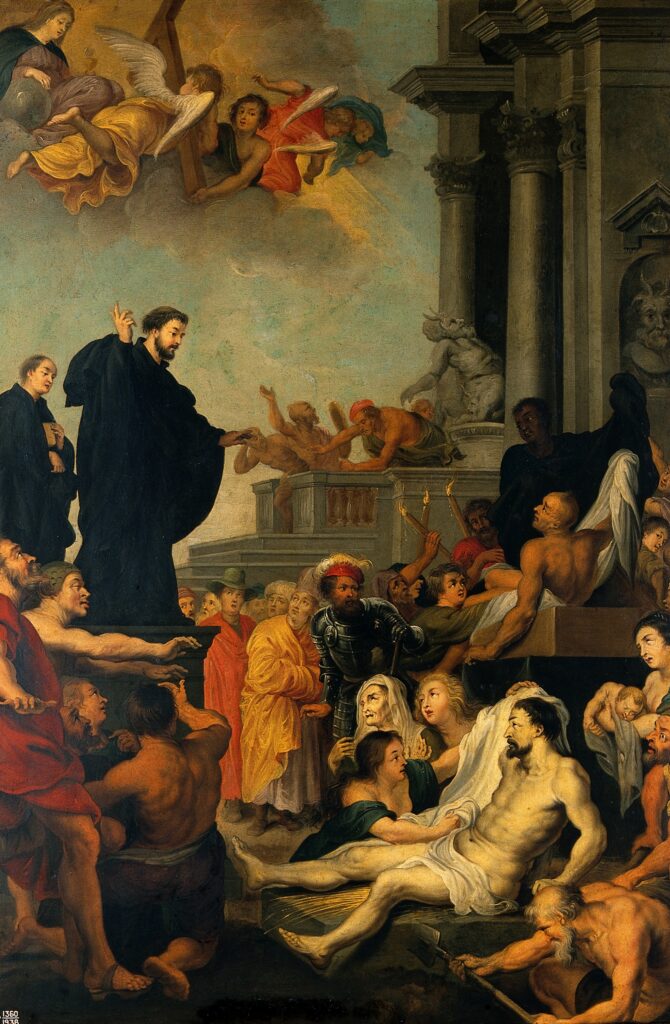Catholics can be rightly proud of the array of ministries and works conducted by dioceses, parishes and church agencies. Across the world the Church is at the forefront of offering services not only to its own members but more broadly to all in need. The Church offers support for the poor, suffering and disadvantaged.

It is important at this moment in history to acknowledge that many of the significant institutions in education, health care and social services exist in the Church because of the pioneering work done by religious women and men. Many works are the fruits of the contribution of people we identify as saints. They are expressions of faith working itself out in love.
At this time many of the ministries of the Church, begun by religious, are now continued under lay leadership. The transition to lay leadership has often seen these works to expand significantly, largely due to access to government funding.
Thus, in Australia, the Catholic Church through its schools educates one in five Australians. Our hospital and aged care facilities are the largest non-government services in the land. Our social services have grown exponentially in recent decades.
The Church employs thousands of people in delivering what is recognised as the highest quality of service in education, health and social works.
For all this we can be rightly proud. The quality of what we are able to offer is largely due to the spiritual inspiration that originally gave rise to these works. Even if many who now work within these Catholic institutions are not themselves Catholic, efforts have been made to preserve the original charism behind the work. This has ensured that these works have a distinctive spirit. There is a certain ‘x factor’ which marks out the special character of the works.
Increasingly our church agencies and, indeed, parish communities, are embracing the concepts of being ‘welcoming’ and ‘inclusive’ which are enjoying popular currency in our society. There is a natural tendency to see these notions as eminently Christian. After all, is this not what Jesus did? Jesus ate with tax collectors and sinners. Jesus showed that he was welcoming and inclusive.
It is natural for someone, for example, who is dealing with people who have complicated marriage and family situations, or who are subject to desires to explore various sexual alternatives, or who struggle with traditional Church teaching on moral issues, to want the Church to be a place of acceptance. In their daily work they encounter people who need what the Church can offer – respect, compassion and love.
Many believe that the Church should modify its teaching on issues such as divorce and re-marriage outside the Church, and gender and sexuality, so that those in these situations would ‘feel’ more welcomed and accepted by the Church. In a similar way people want the Church to change its practice in relation to Holy Orders so that women could be ordained and so not ‘feel’ excluded.
In relation to the subject of intercommunion, if Jesus was prepared to eat with tax collectors and sinners, should not the Church welcome all to the Communion table irrespective of their personal situation?
If we modified teaching on particular moral matters would not more people be attracted to the Catholic faith? Would not those who have walked away come back?
In considering these questions we do need to ask: what is the mission of the Church? Is it to be a place of welcome for all where all can ‘come as they are’ and ‘stay as they are’? Or is something more required?
To address this question let us return to the ministry of Jesus. Why did Jesus eat with tax collectors and sinners? Was it to offer them recognition and acceptance? Or was it to bring about their conversion?
In the Scriptures we read of Jesus sitting at a well speaking with a Samaritan woman. In the course of the conversation Jesus reveals that he knows that she has five husbands. He speaks a word of truth, not to condemn and reject her, but to open a path to her addressing this issue of sin in her life. Jesus did not leave her in sin, but instead through proclaiming the truth called her to conversion, to ‘drink the water of eternal life’. Hearing the truth she was so moved that she went back to the village to invite others to meet the man who told her everything she ever did.
Similarly, to the woman caught in adultery Jesus’ final remark to her was, “Go and sin no more”.
He extended mercy and forgiveness but urged her to change her life.
When Jesus saw the tax collector, Zacchaeus, up the tree trying to get a glimpse of him, Jesus boldly said that he would come to his house for a meal. The effect of this on Zacchaeus was extraordinary. He announced a radical change to his life. Jesus’ comment on his decision to reform his life illustrates his purpose in engaging with Zacchaeus, “Today, salvation has come to this house”.
Jesus sought out the lost and the stray in order to bring them to a change of heart and a change of life. He was able to do this to many whom he encountered during the years of his public ministry. We think here of the woman who washed his feet with her tears, so grateful was she for the new life Jesus had opened up for her. Time and time again the Gospels reveal that the encounter people had with Jesus changed their lives.
From the very outset Jesus was upfront about his mission: “the Kingdom of God is close at hand, repent and believe” (Mk 1:15). He called people to repent, to change the orientation of their lives. He called upon them to believe this good news of salvation being offered to them and so to live a life of faith now centred on God.
It is clearly evident that Jesus was welcoming to all. He spoke several times in parables about an invitation extended to all to come to a wedding feast. However, to enter the wedding feast one must wear a wedding garment (see Mt 22:1-14). While all are invited, it is expected that they comply with the essential requirements of entry into the wedding.
The Church should indeed be welcoming to all, as Jesus was. But to enter into the Christian life it is necessary to “repent and believe”. Prior to a person being baptised they are asked to renounce sin and to profess their faith in the essentials of the Creed. This is not just a one-off entry requirement but the very essence of the Christian life. In repenting and believing we are following the Way of Jesus Christ, which is the only way to authentic happiness and human flourishing. The Christian life is about a daily conversion to live more deeply the way of Jesus Christ.
The mission of the Church is and always must be a proclamation of the fullness of life in Christ.
All are welcome to hear the truth. Only in Christ can human life truly flourish and the faithful believer be marked out for eternal salvation.
Thus, a welcoming Church will lead people on a path of conversion of life to faith in Jesus Christ, as the way, the truth and the life.



I love the parable of the wedding feast but was confused for years by the king’s rejection of the man without the garment. In my imagination, I pictured a poor man unable to afford a wedding garment and it seemed contradictory of Jesus to condemn him. But that was a misreading of the text. As the good Archbishop notes, the wedding garment is a reference to baptism and repentance and is one of the reasons a white garment is part of the baptism ceremony. Everyone (every sinner) is indeed invited to the wedding (ie the kingdom of heaven) and the way we say ‘yes’ is via the conversion of our hearts and lives.